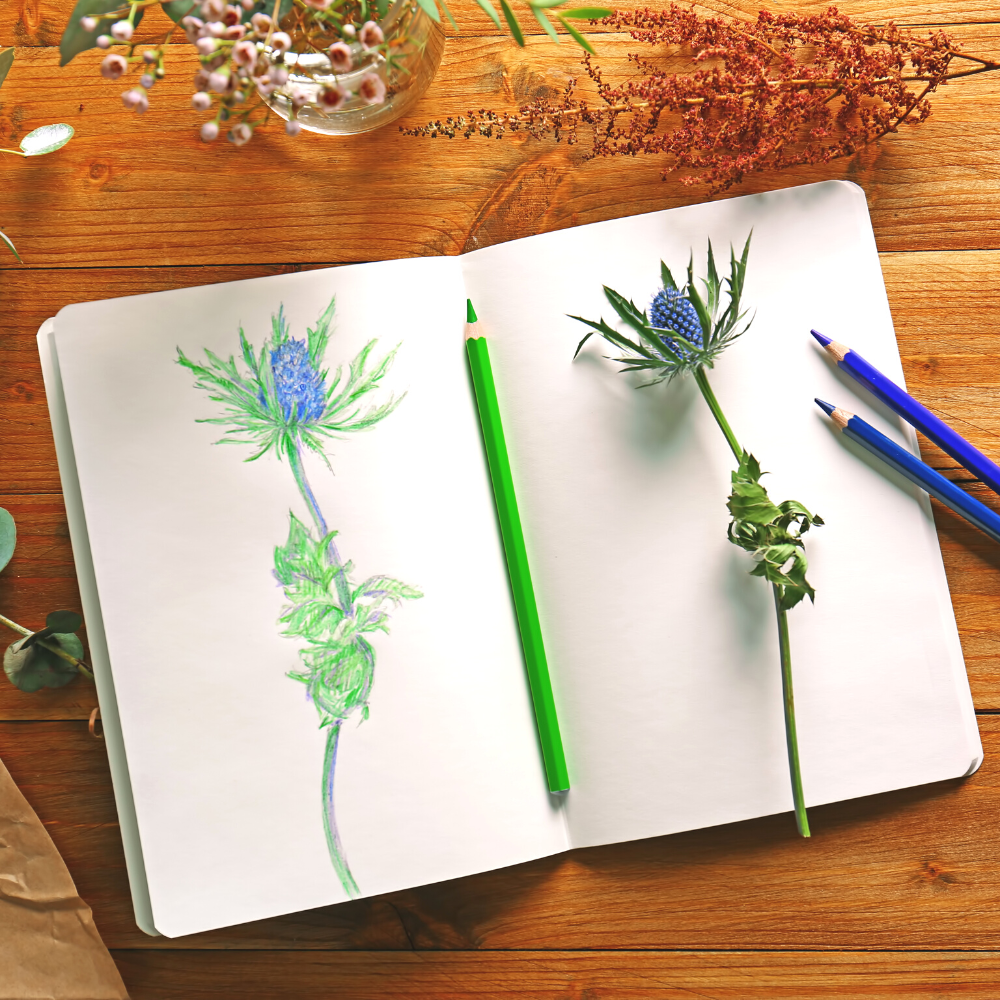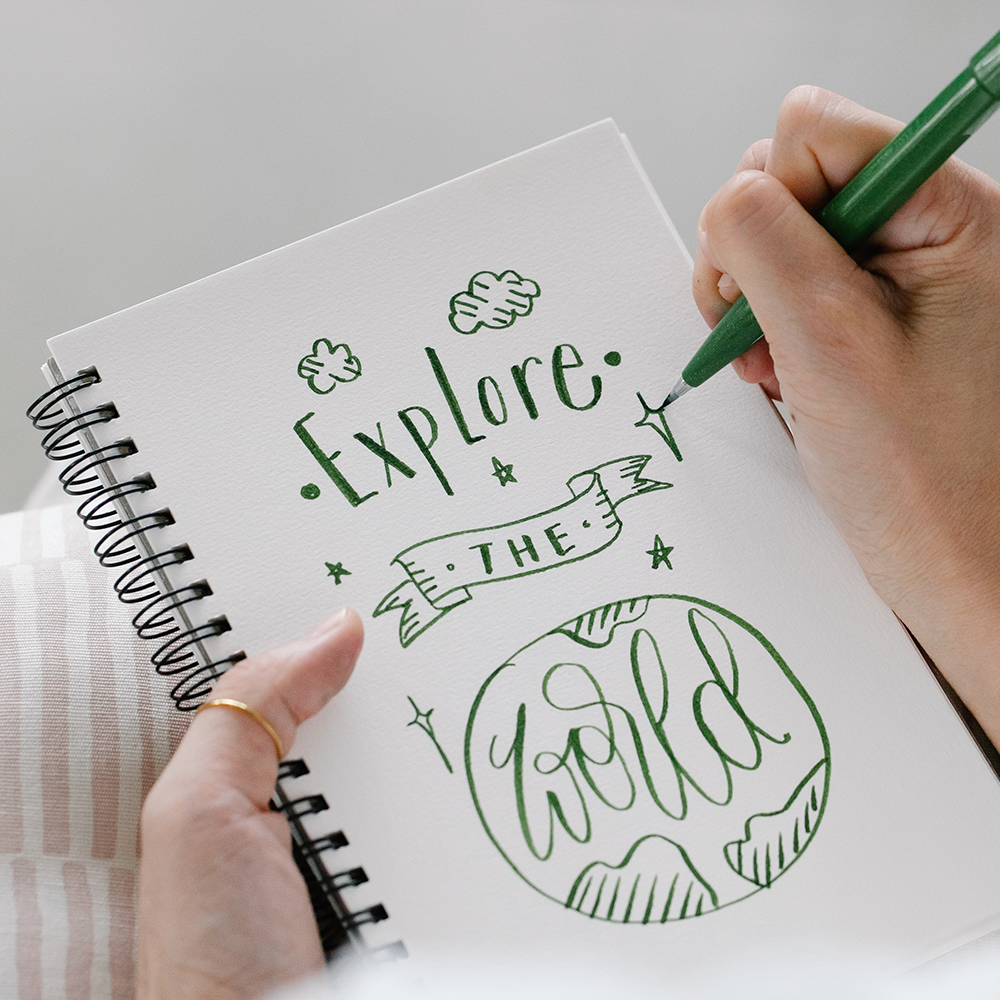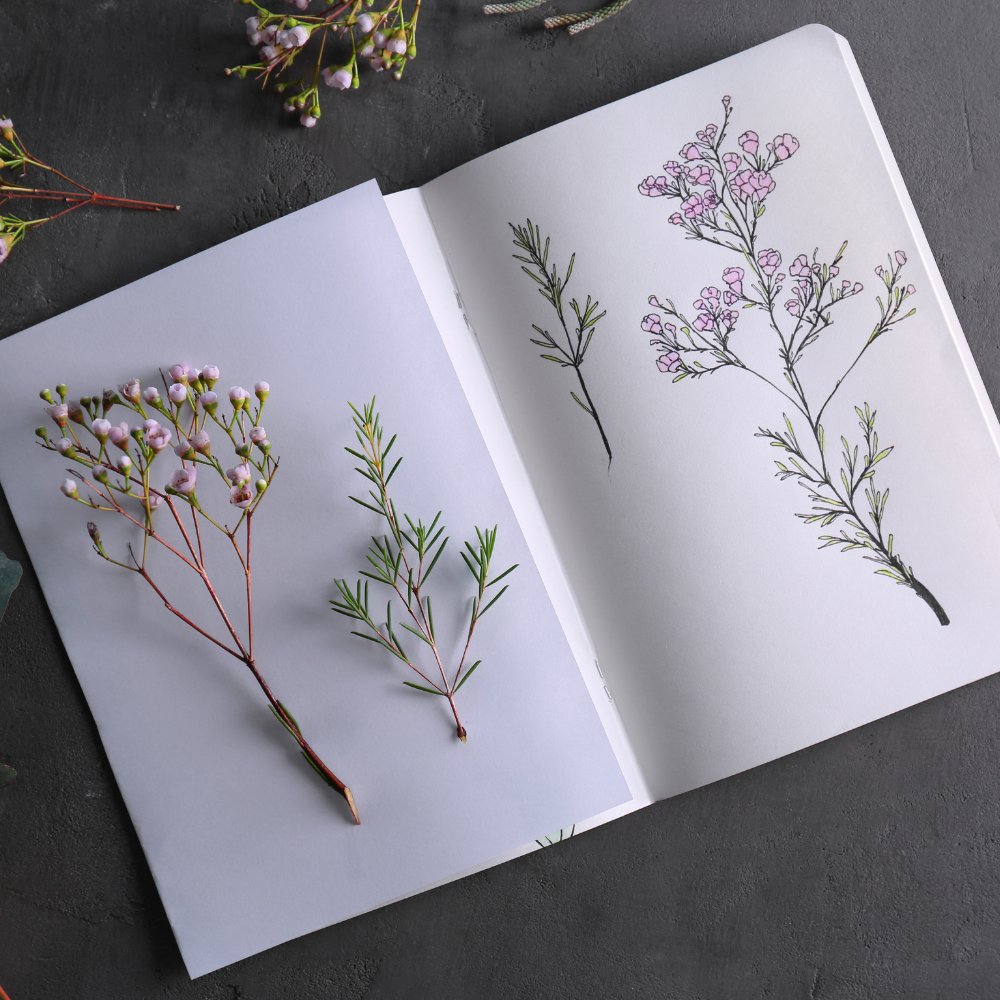Are you a creative soul searching for a creative outlet?
Maybe you've dabbled in watercolors or attempted to sketch a few portraits, but just can't seem to find the right medium for your creative expression.
As artists, we crave the freedom to express ourselves without limitations, but the idea of "rules" can often make us feel like our creativity is being stifled.
Let's unlock the secrets of art journaling - an unapologetic form of self-expression where there are no right or wrong ways.
Whether you're a seasoned artist looking for a new outlet or a beginner itching to explore your creativity, this post is for you.
Get ready to break all the traditional rules as we discuss what it means to have an art journal and how it can be used as a tool for unleashing your inner artist.
It's time to break free from artistic constraints and unleash your most authentic self on those pages!
So, grab your pens, paints, and any other medium that catches your fancy, because we're about to dive into the world of limitless possibilities through art journaling!
Key Takeaways:
- Understand the foundational rules for starting and maintaining an art journal.
- Discover the essential art supplies and techniques for creating captivating art journal pages.
- Learn how to use art journaling as a tool for self-expression and mental health improvement.

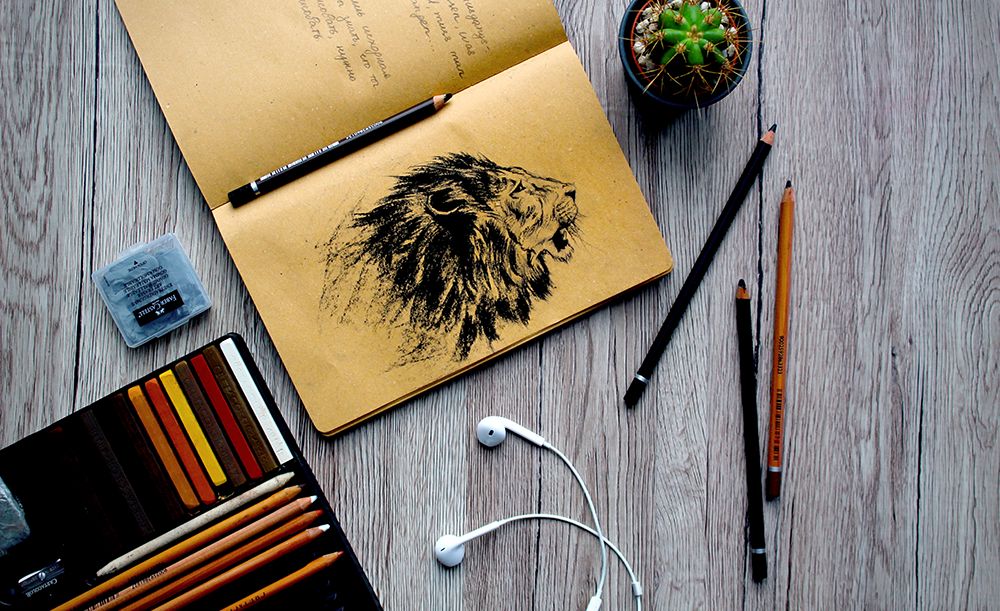

The Essence of Art Journaling
Art journaling is a vibrant form of creative self-expression that combines elements of writing, drawing, painting, and collage.
It's a creative process that allows individuals to explore their thoughts, feelings, and experiences through visual diary entries.
Art journaling is more than just a hobby; it's a journey into self-expression and creativity.
It's a personal space where there are no wrong ways to create.
The essence of art journaling lies in the freedom it offers, allowing you to experiment with materials, techniques, and ideas without the pressure of perfection.
Art journaling combines traditional journaling with art-making.
You can create a visual diary of your thoughts, feelings, and experiences using a variety of mediums such as paint, markers, pencils, and collage.
The possibilities are endless, and there is no right or wrong way to create an art journal.
It's a space for you to unleash your creativity without any limitations.
The Rules of Art Journaling
Before you start your art journal journey, it's essential to understand the foundational rules that will help guide you along the way.
- There are no official rules - The beauty of art journaling is that there are no specific rules to follow. You have the freedom to create and express yourself in any way you want.
- Don't compare - Art journaling is a personal process, so avoid comparing your work to others. Each person has their unique style and perspective, and that's what makes art journaling special.
- Experiment - Don't be afraid to experiment with different techniques, mediums, and styles. Art journaling is about exploring your creativity without limitations.
- Practice self-care - Art journaling can be a therapeutic process, so take breaks when needed, and don't put pressure on yourself to create perfect pages every time.
- Learn from others - While there are no set rules, it's always helpful to learn from others. Watch tutorials, attend workshops, and connect with fellow art journalists for inspiration and tips.
- Stay organized - Keeping your art supplies organized can save you time and frustration when creating. It also allows you to have a clear space to focus on your creativity.
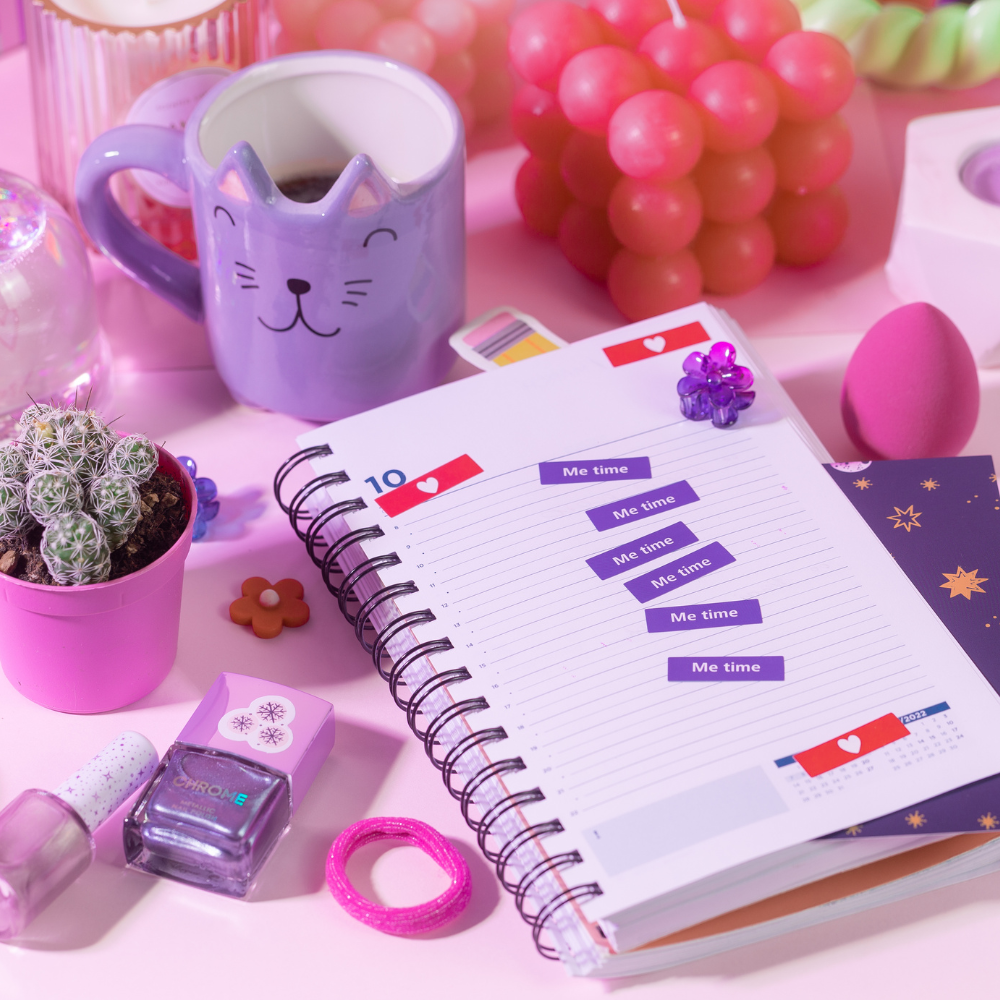
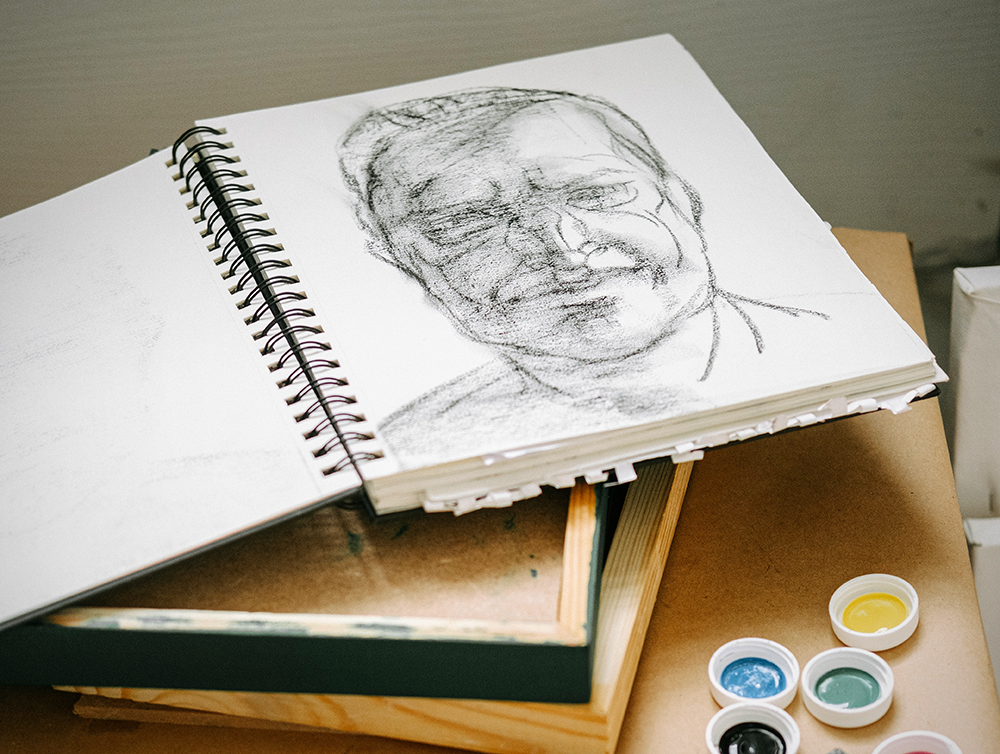
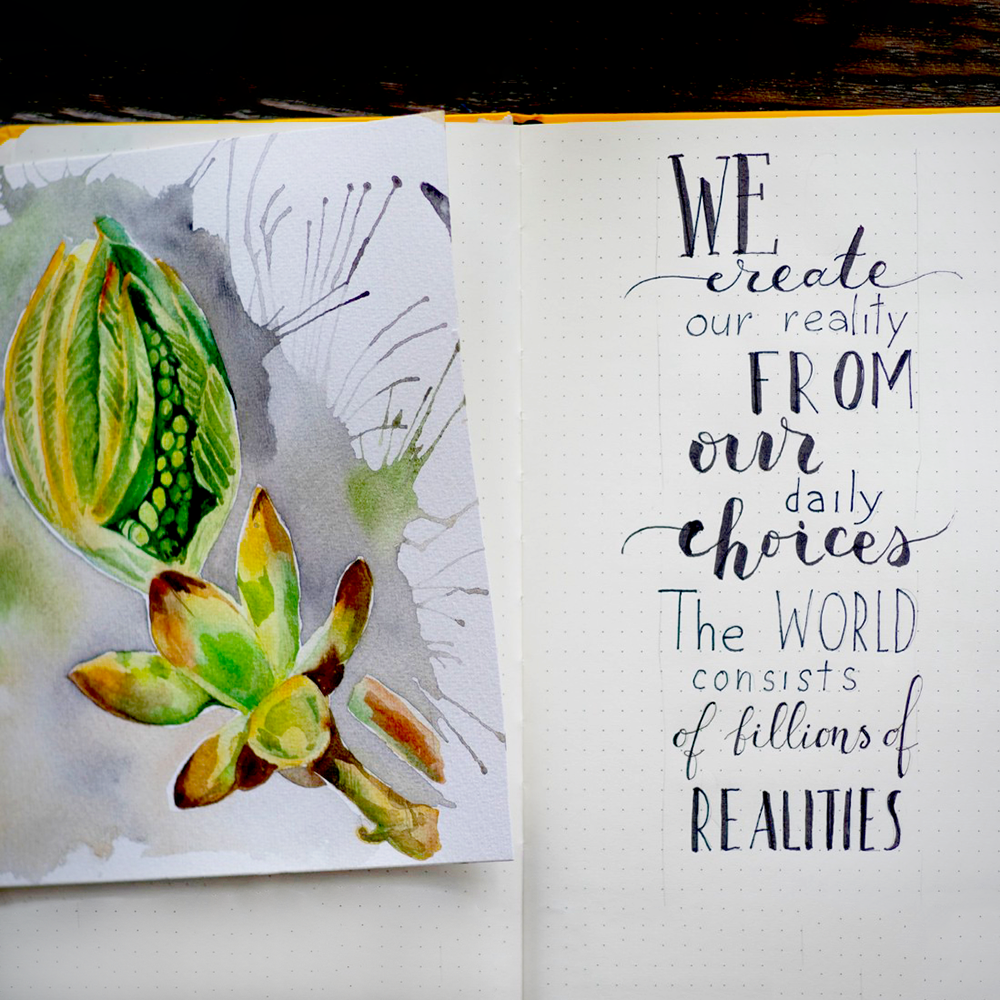
The Philosophy Behind Art Journal Rules
Art journaling, at its core, is a personal endeavor, yet certain guidelines can enhance the creative journey.
The question of "what are the rules for art journaling" often arises among beginners seeking structure in their artistic expression.
While art journals are inherently flexible, adhering to a few unwritten rules can provide a framework that fosters creativity.
These rules are not about restricting your art but rather about creating a conducive environment for your ideas to flourish.
They encourage regular practice, the exploration of new techniques, and the cultivation of a personal style, all of which are crucial for creative growth.
The rules for art journaling also emphasize the importance of process over product.
This mindset allows artists to focus on the act of creation without the pressure of achieving perfection.
It's about letting your art journal be a space where mistakes can lead to unexpected discoveries and where every page doesn't need to be a masterpiece.
By understanding these principles, artists can use their journals as a tool for creative exploration and self-expression, making each art journal step a building block in their creative journey.
The Fundamentals of Art Journaling Rules
Art journaling, while inherently a personal and free-form activity, does have some guiding principles that can help practitioners maximize their creative expression.
The first rule is that there are no hard rules. This paradoxical statement underscores the importance of freedom in art journaling.
It's about allowing oneself to explore, make mistakes, and learn without the pressure of perfection.
Another unwritten rule is to make art journaling a regular practice.
Just like any skill, consistency in art journaling can lead to significant improvements in both technique and personal style.
By setting aside time for this practice, artists can develop a deeper connection with their creative selves.
Another key aspect to consider is the rule of self-expression over technical skill.
While understanding the fundamentals of art can be beneficial, art journaling places more value on the conveyance of personal thoughts and emotions.
This means that individuals who engage in art journaling should focus on what they want to express rather than how technically proficient they are.
The use of color, texture, and form should serve as tools for storytelling and introspection.
This approach allows for a more authentic and therapeutic experience, as the art journal becomes a safe space for personal exploration and growth.
Navigating the Do's and Don'ts of Art Journaling
Art journaling is a deeply personal and flexible practice, yet certain guidelines can help streamline the creative journey.
While there are no strict mandates for art journals, adhering to a few do's and don'ts can enhance the experience.
Do embrace imperfection, as it is the essence of personal growth and creativity.
Don't let the fear of making mistakes deter you from experimenting with new techniques or materials.
The freedom to create without judgment is what makes art journaling a liberating and therapeutic endeavor.
In the realm of art journaling, it's crucial to understand that rules are more like signposts than barriers.
They guide you but should not confine your artistic expression.
Do use your journal to explore emotions and thoughts that are difficult to articulate verbally.
Don't feel pressured to produce a masterpiece on every page.
The purpose of an art journal is to provide a safe space for self-expression and exploration, not to serve as a gallery of flawless art.
Remember, the journey is more significant than the destination in the world of art journaling.

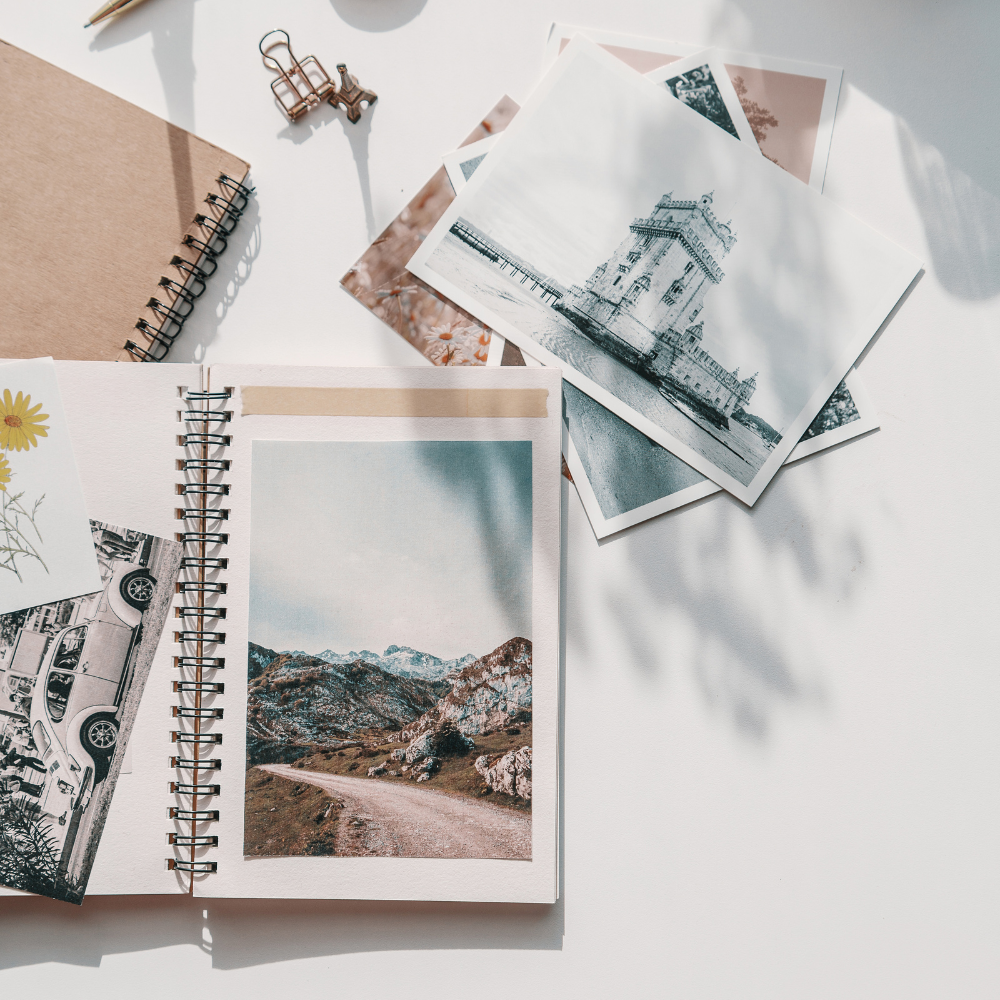
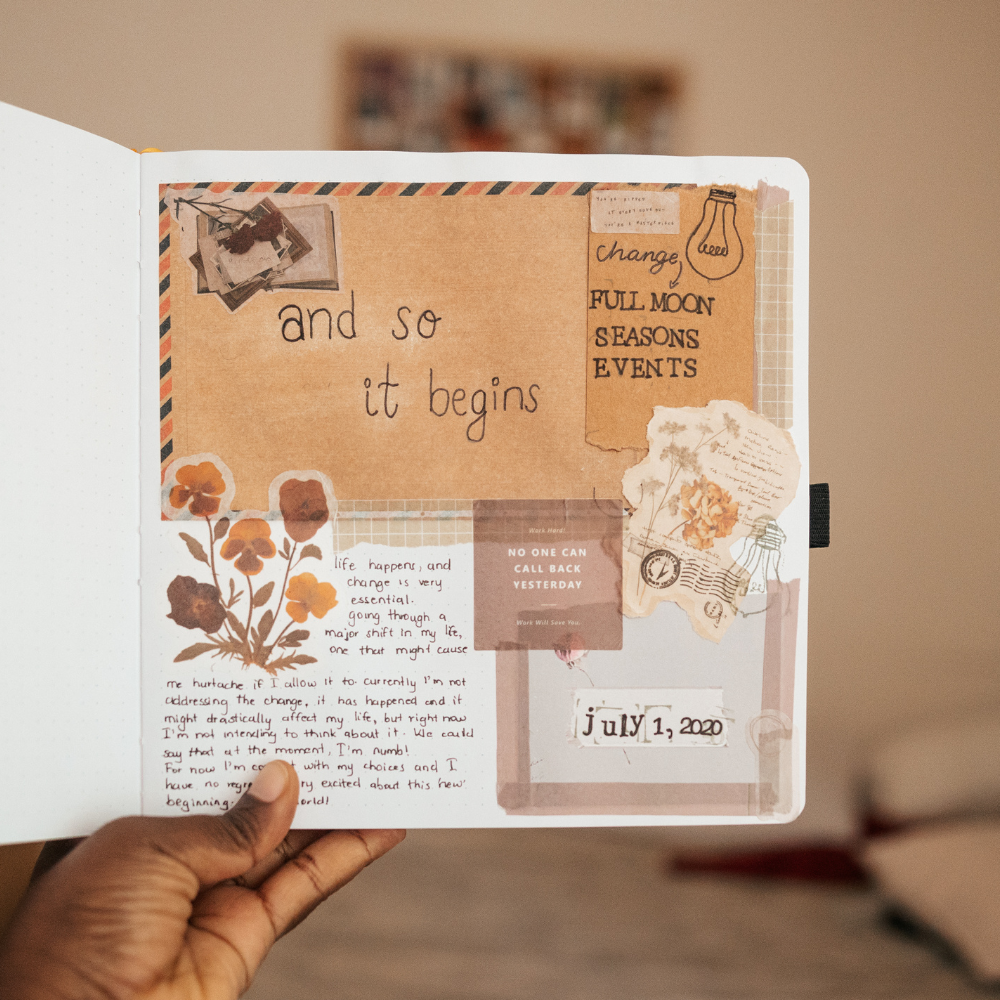
Choosing Your Art Journal
The first step in your art journaling journey is selecting the right journal.
Paper can come in all sorts of types, sizes, and textures, so it's essential to choose one that suits your style and preferred mediums.
Some popular types of journals for art journaling include:
- Sketchbook - This is a classic choice for art journaling. Sketchbooks come in various sizes and paper weights, making them versatile for different mediums.
- Watercolor Paper - For those who love using watercolors, a watercolor paper journal is a great option. It's thicker and can handle more water without buckling.
- Mixed Media Paper - If you enjoy using multiple mediums in your art journal, then a mixed media paper journal may be the best choice. It's designed to handle wet and dry mediums without bleeding through.
- Notebook - If you prefer writing in your journal, then a notebook with blank pages is a great option. You can add in photographs, stickers, and other elements to incorporate creativity into your entries.
Thicker paper is ideal for handling wet media like acrylic paint and watercolor, while a composition notebook might be suitable for sketching and writing.
Consider what art journal supplies you'll be using most often to determine the best type of journal for your needs.
Gathering Your Art Supplies
When it comes to art supplies, the choices are endless.
From colored pencils and rubber stamps to spray inks and old books, the materials you choose will shape your art journal pages.
It's important to select supplies that resonate with your style and the techniques you want to explore.
Common art supplies for art journaling include:
- Pens and Markers - These are essential for writing and outlining your artwork.
- Paints- Acrylic, watercolor, gouache, and oil paints can all be used in art journals.
- Inks - Inks come in various forms, including spray bottles, ink pads, and pens, and can add interesting effects to your pages.
- Stamps and Stencils - These are great for creating patterns, texture, and adding designs to your pages.
- Collage Materials - From old magazines and scrapbook papers to fabric scraps and photographs, collaging is a popular technique in art journaling.
- Pencils and Colored Pencils: These are great for sketching and adding details to your pages.
- Stickers, washi tape, and other embellishments can also be used to add dimension and interest to your pages.
Remember that it's not necessary to have all the art supplies to start your journal.
Start with a few basics, and as you continue on your art journaling journey, you can add more supplies to your collection.
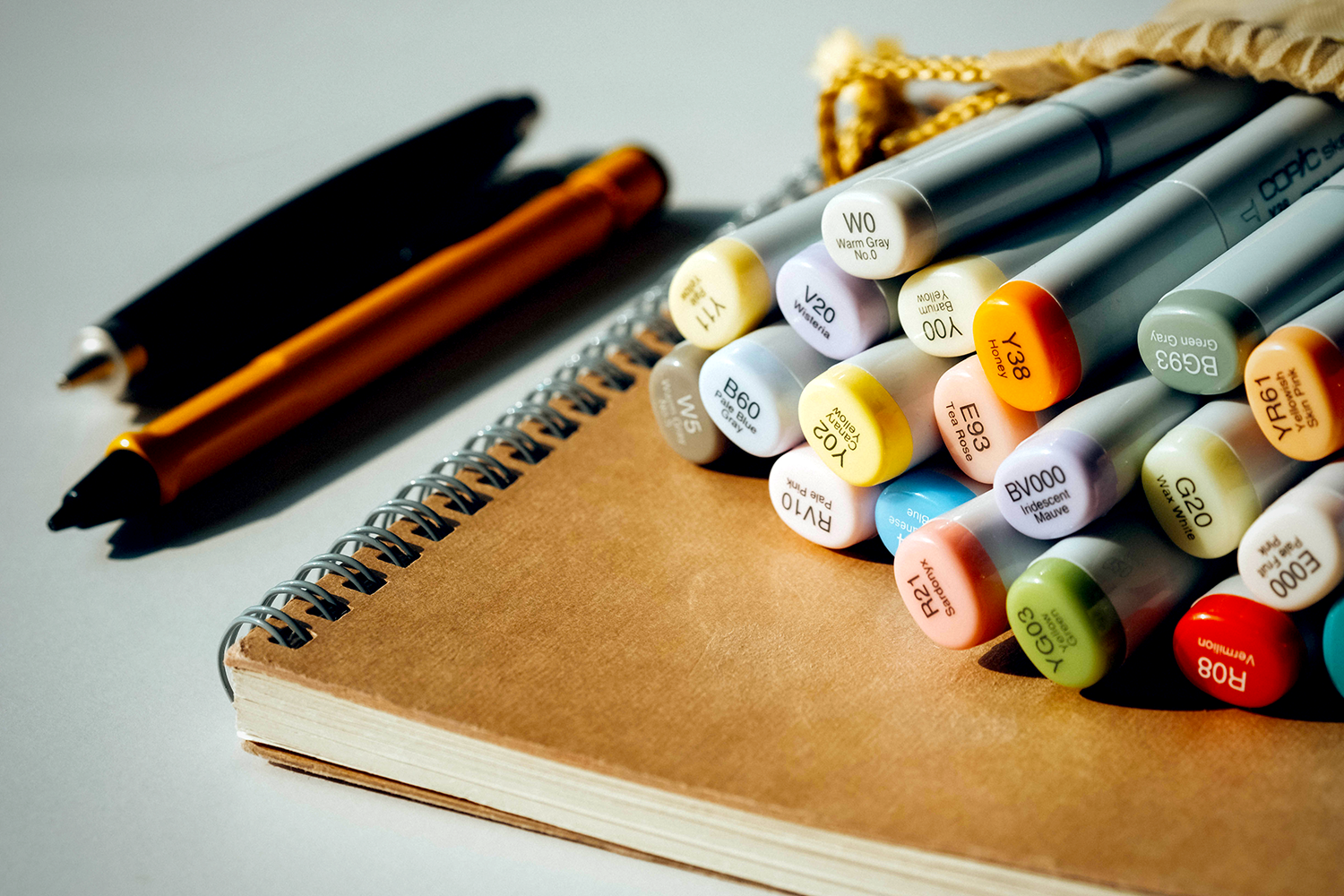
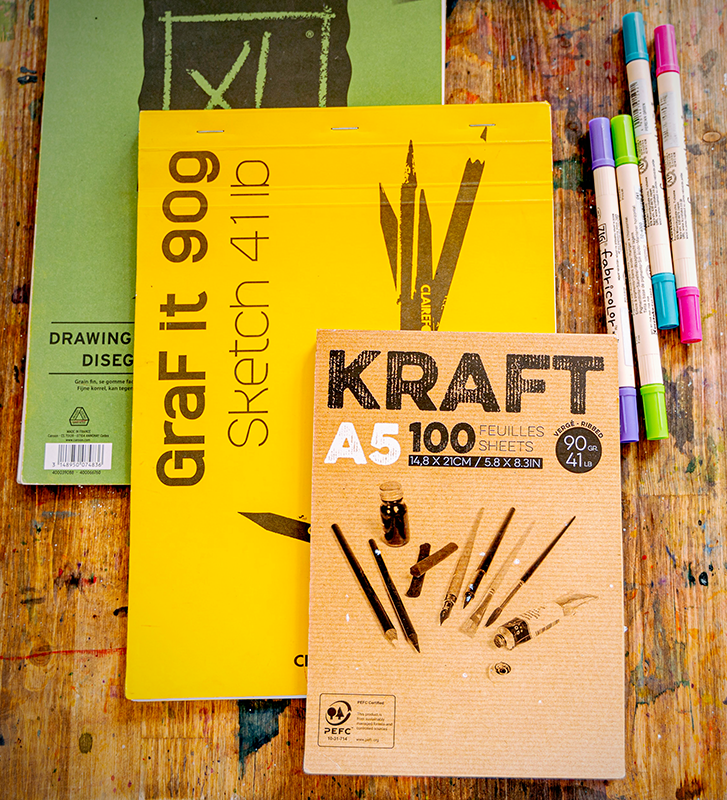
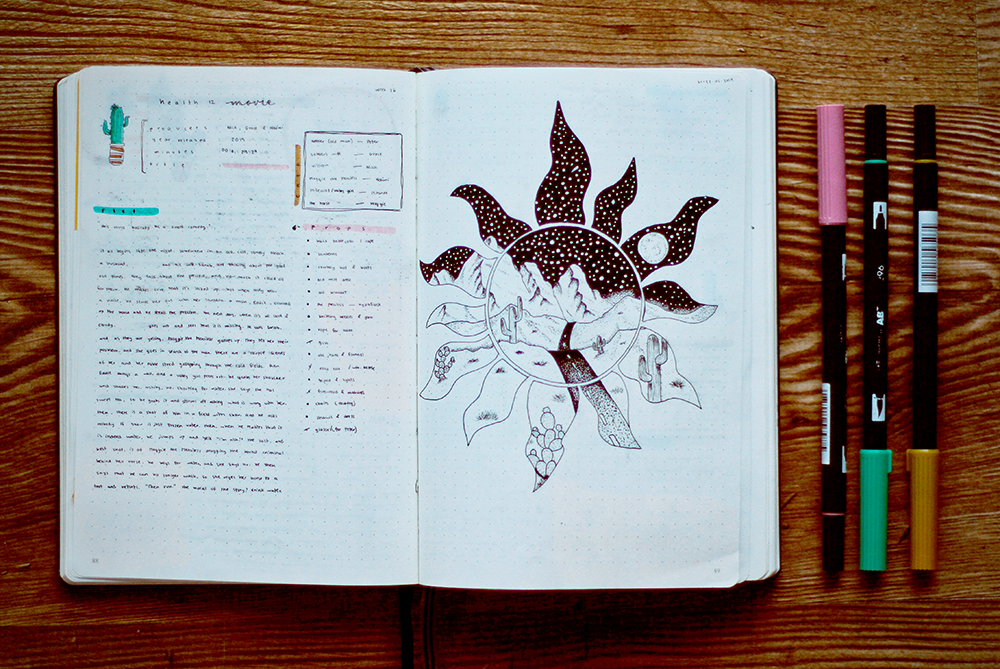
Techniques for Art Journaling
Now that you have an idea of the foundational rules for art journaling and have gathered your necessary supplies, let's explore some techniques to incorporate into your pages:
- Backgrounds: Experiment with different techniques for creating interesting backgrounds such as using watercolor washes, acrylic paint smears, or collage.
- Lettering and Quotes: Use hand-lettering or stickers to add meaningful quotes or lyrics to your pages.
- Layering: Layer different elements like images, colored papers, and text to create depth and dimension on your pages.
- Collage: Cut and paste images, papers, and other materials to create unique designs on your pages.
- Blending: Use blending tools or techniques to blend colors together for a cohesive look.
- Experiment with Mediums: Don't be afraid to try new mediums and explore different techniques. You never know what interesting effects you may discover!
The Blank Page: Starting Your Art Journal
Facing a blank page can be daunting, but it's the starting point of every art journal page.
To start creating, you can begin with a painted background or a simple first layer of collage using paper ephemera like subway tickets or clothing tags.
This sets the stage for further embellishment and exploration.
Developing a Focal Point
Every art journal page needs a focal point to draw the viewer's eye.
This could be a striking image, a bold piece of text, or an interesting composition.
Your focal point will guide the viewer through your page and give your work a sense of direction.
Incorporating Text and Writing
Writing is a fundamental aspect of art journaling.
Whether it's song lyrics, words from a bucket list, or your own thoughts, incorporating text adds depth to your pages.
You can write directly on your pages or add text using stamps, stickers, or handwritten notes.
Exploring Mixed Media Art
Mixed media art is at the heart of art journaling.
Combining different materials and techniques, such as layering acrylic paint with colored pencil or adding fabric to paper, creates rich, textured pages that are visually engaging and full of life.
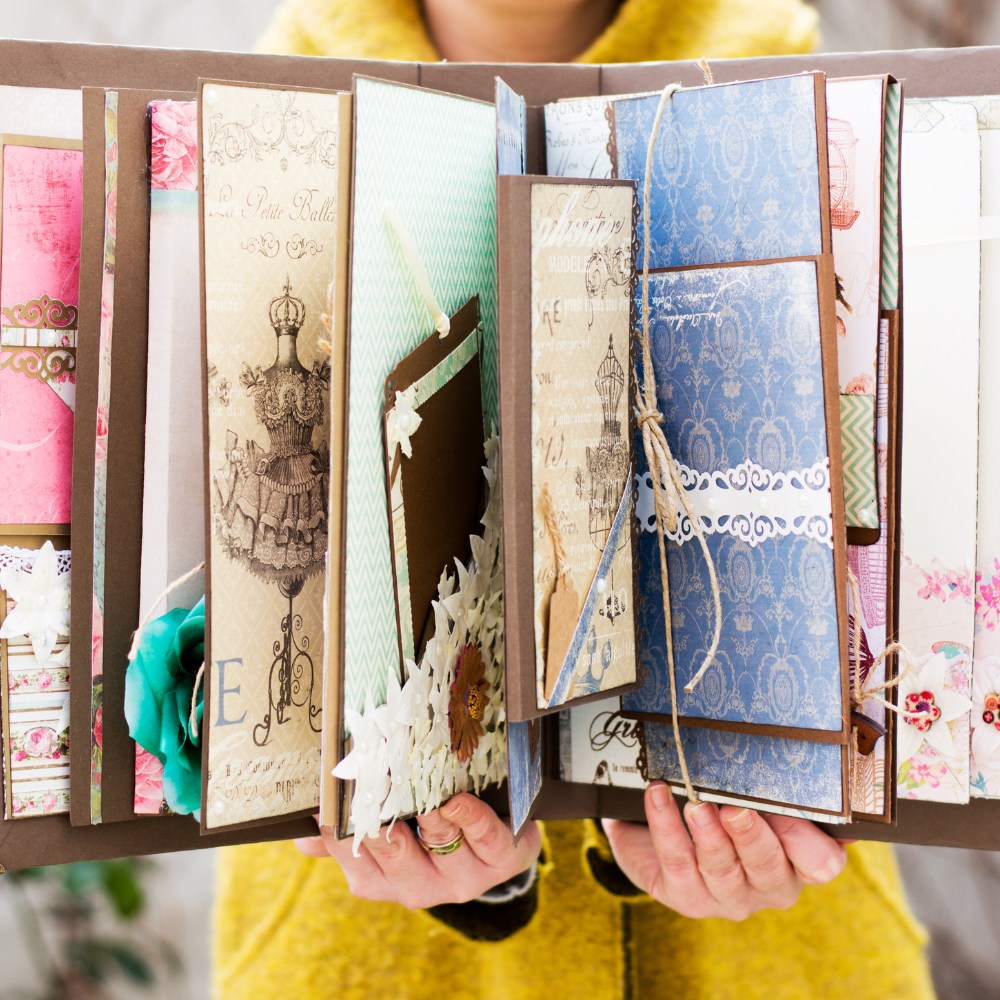
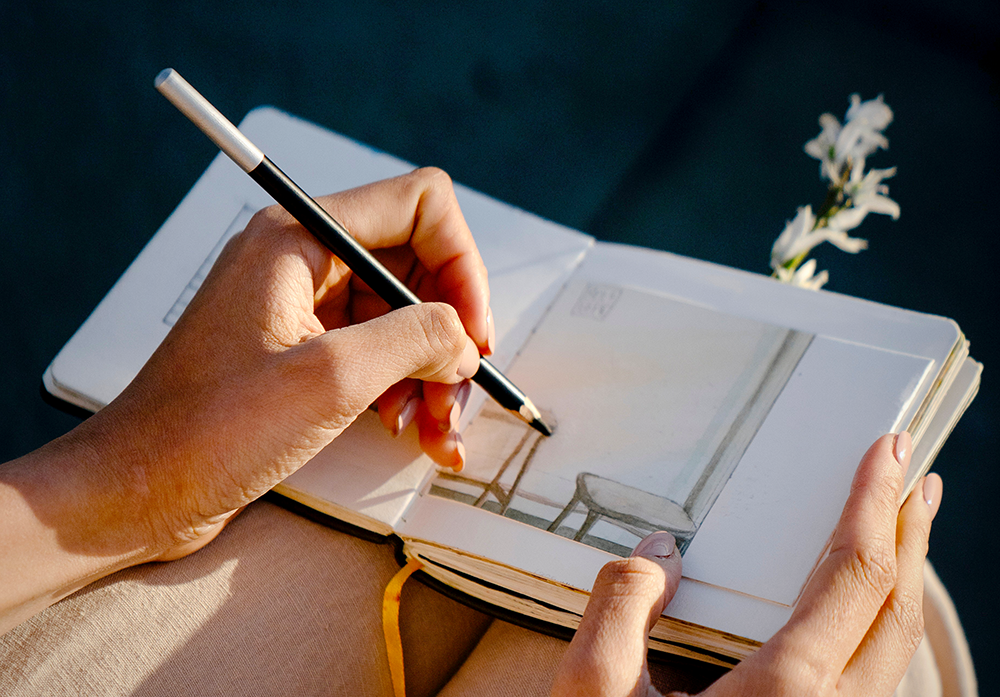

Embracing the Creative Process
The creative process in art journaling is about letting go and allowing yourself to experiment.
There's no wrong way to create an art journal page.
Whether you're at your kitchen table or on the subway, take the opportunity to add to your journal whenever inspiration strikes.
Embrace the messiness and imperfection, and most importantly, have fun!
The Significance of Choosing the Right Medium
When embarking on the journey of art journaling, one of the pivotal rules is selecting the appropriate medium for your creative expression.
The medium you choose can dramatically affect the texture, finish, and overall mood of your art journal pages.
Whether you opt for watercolors that lend a soft, dreamy quality to your sketches, or acrylics that offer bold and vibrant hues, each medium brings its unique characteristics to the table.
It's essential to experiment with different mediums to discover which ones resonate with your artistic voice and enhance the themes you wish to explore in your art journal.
Moreover, the medium you select can also dictate the type of sketchbook or old book you use as your art journal.
Some mediums, like markers or ink, require a heavier paper to prevent bleeding, while others, such as charcoal or pastels, may call for a textured surface to better hold the pigment.
The rule of thumb is to consider the compatibility of your chosen medium with the paper in your art journal.
This step by step guide to selecting the right medium is not just about the final look but also about ensuring a fun and frustration-free art journaling experience.
Cultivating a Theme in Your Art Journal
Developing a theme for your art journal can be a powerful way to channel your creativity and maintain focus.
A theme can be anything from a specific color palette, a recurring subject, or an overarching concept that ties your entries together.
This approach can help artists delve deeper into a particular idea, allowing for a more profound exploration and understanding of their chosen focus.
Themes can also serve as a source of inspiration when the well of ideas seems to run dry, guiding the artist back to a familiar creative path.
While some may worry that a theme could become restrictive, it often has the opposite effect, acting as a catalyst for new ideas and artistic experiments.
For instance, if an artist chooses 'nature' as a theme, this could encompass a vast array of interpretations and mediums, from detailed ink sketches of flora to abstract representations of landscapes using mixed media.
The key is to allow the theme to evolve naturally, letting each art journal step inform the next, and watching as your theme becomes a rich tapestry of your artistic journey.
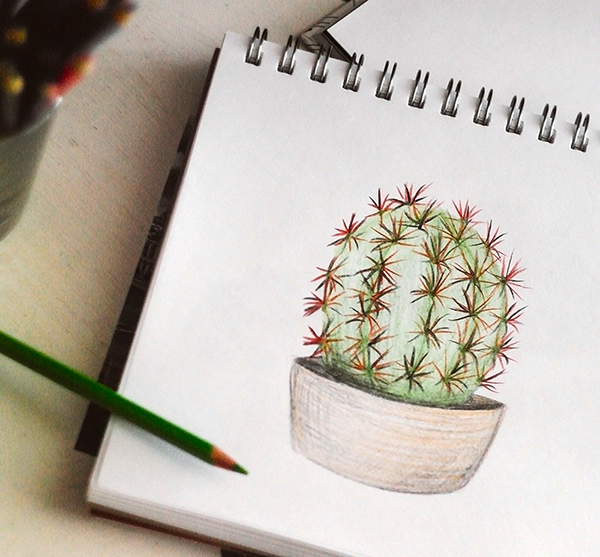

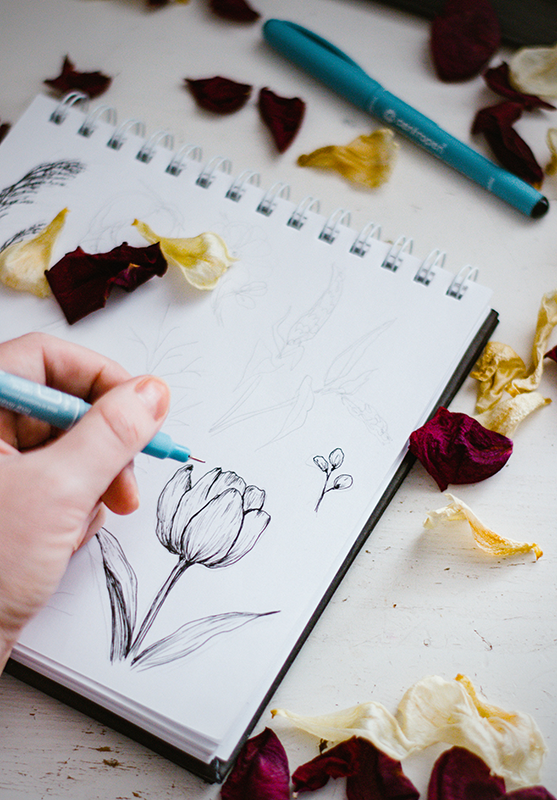
Interplay Between Discipline & Spontaneity in Art Journaling
The question of what are the rules for art journaling often leads to the discussion of balancing discipline with spontaneity.
On one hand, setting aside dedicated time for journaling can cultivate a habit that nurtures your creativity and ensures consistent practice.
On the other hand, spontaneity plays a vital role in capturing the raw, unfiltered bursts of inspiration that often lead to the most profound artistic expressions.
Striking a balance between these two can lead to a fulfilling art journaling routine.
Discipline in art journaling doesn't mean stifling your creative impulses with rigid rules; rather, it's about creating a framework within which your creativity can thrive.
For instance, you might set a rule to journal daily, but what you create within those sessions should be free from constraints.
Spontaneity, then, becomes the spark that ignites the flame of imagination within the structured time you've allocated for your art.
By honoring both discipline and spontaneity, you can develop a rich and rewarding art journaling practice that continually evolves with your artistic journey.
Integrating Art Journaling Rules into Practice
When it comes to integrating the rules of art journaling into one's practice, it's important to start with intention.
Before opening the journal, artists should ask themselves what they hope to achieve or explore in their session.
This could be as specific as working through a particular emotion or as broad as experimenting with a new medium.
The intention sets the stage for a focused and meaningful art journaling experience.
Additionally, artists should embrace the rule of non-judgment.
Art journaling is not about creating masterpieces for exhibition but rather about the process of creation itself.
This means letting go of self-criticism and embracing whatever emerges on the page.
Practical application of these rules can be seen in the way artists approach their journaling sessions.
For example, setting a timer for a quick sketch or stream-of-consciousness writing can help in overcoming the intimidation of a blank page.
It's also beneficial to revisit and reflect on previous pages, as this can provide insights into personal growth and changes in creative direction.
By regularly reviewing their work, artists can observe patterns and themes that emerge over time, which can inform future art journaling endeavors.
The key is to remember that the rules for art journaling are there to serve as a framework, not a constraint, allowing each individual's creativity to flourish within a supportive structure.
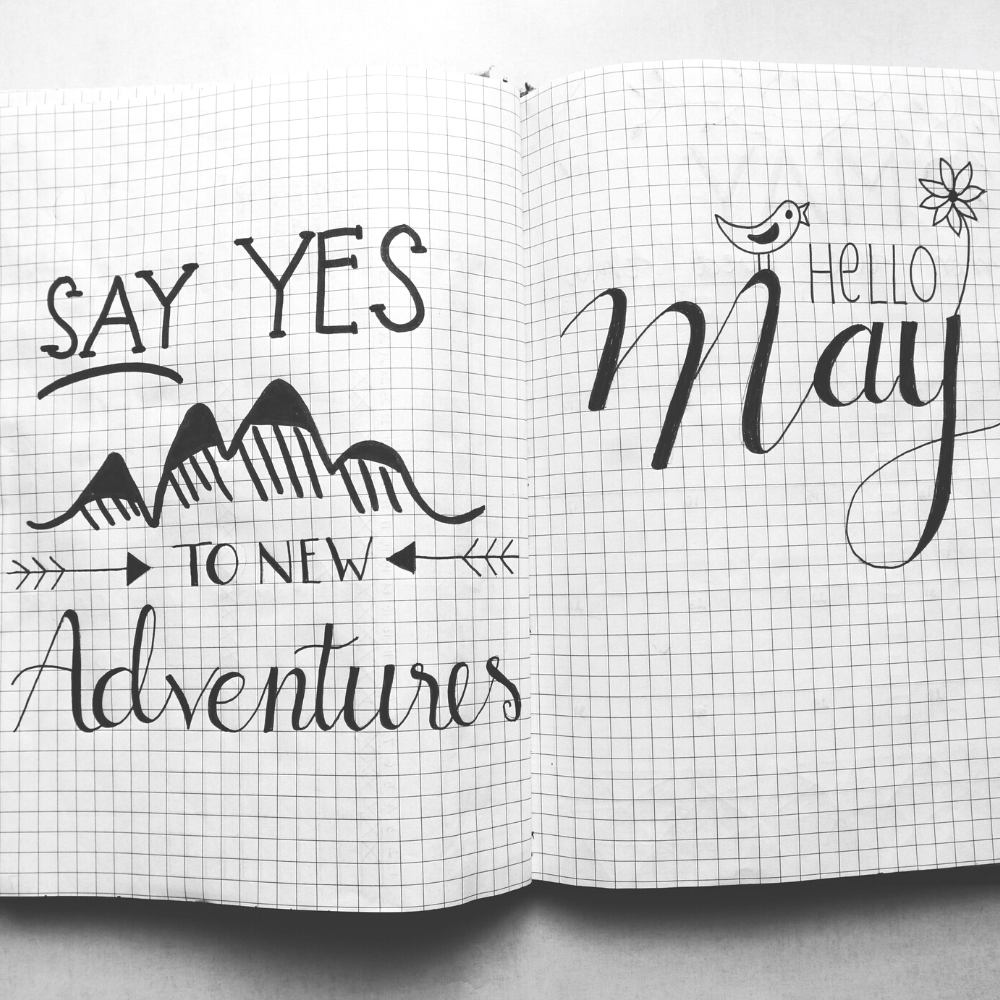


Art Journaling as a Tool for Self-Discovery
Art journaling is not merely a form of self expression; it's a profound journey into the self, offering a visual narrative of one's inner world.
As you start art journaling, you'll find that the rules for art journaling are not restrictive but rather serve as a framework to guide your exploration.
Each page, each entry, becomes a step in the process of self-discovery.
Through the use of symbols, imagery, and color, art journalers can delve into their subconscious, bringing to light thoughts and feelings that might not be easily expressed through words alone.
The practice of dedicating two pages to a particular theme or emotion can be particularly revealing.
This approach allows for a deeper dive into the subject matter, providing ample space to juxtapose contrasting ideas or to build upon a concept, layer by layer.
As you fill your art journal with these personal explorations, patterns begin to emerge, offering insights into your own psyche.
Art journal ideas may start as simple creative exercises, but they often evolve into profound reflections that document your growth and self-awareness over time.
Finding More Inspiration
Inspiration for your art journal can come from anywhere.
Look to other artists, nature, or even your daily life for ideas.
Collecting images, quotes, and other bits of inspiration can help spark your creativity when you're feeling stuck.
You can also join art journaling groups or take classes to learn new techniques and connect with other artists.
But most importantly, trust your own unique artistic voice and let it guide you on your art journaling journey.
Remember that there are no mistakes in art journaling, only opportunities for growth and self-expression.
The Role of Mental Health in Art Journaling
Art journaling can be a powerful tool for improving mental health. It offers a way to process emotions and experiences through a creative outlet.
The act of making art can be therapeutic and can help you gain insight into your life and feelings.
Additionally, the practice of mindfulness in art journaling can help reduce stress and anxiety.
Art journaling also provides a safe space for self-expression without judgment.
In this way, it can be a form of self-care and self-love.
By regularly engaging in art journaling, individuals can cultivate a stronger sense of self-awareness and emotional well-being.
Creating a Visual Diary
Your art journal is a visual diary of your life.
It's a place to document your experiences, dreams, and reflections.
Each page is a snapshot of a moment in time, captured through the lens of your creativity.
By regularly art journaling, you can look back on your entries and see how you've grown and changed over the years.
It's a beautiful way to preserve memories and emotions that might have otherwise been forgotten.
Learning from Other Artists
One of the best ways to grow as an art journalist is to learn from other artists.
Attend workshops, read books, or take an online course to learn new techniques and get more inspiration.
Seeing how other artists approach their journals can open up new possibilities for your own work.
The Importance of Experimentation
Experimentation is key to finding your unique voice in art journaling.
Try different combinations of materials and techniques to see what resonates with you.
Remember, every experiment, whether successful or not, is a learning experience.
Don't be afraid to push the boundaries and step out of your comfort zone.
That's where true creativity takes flight.
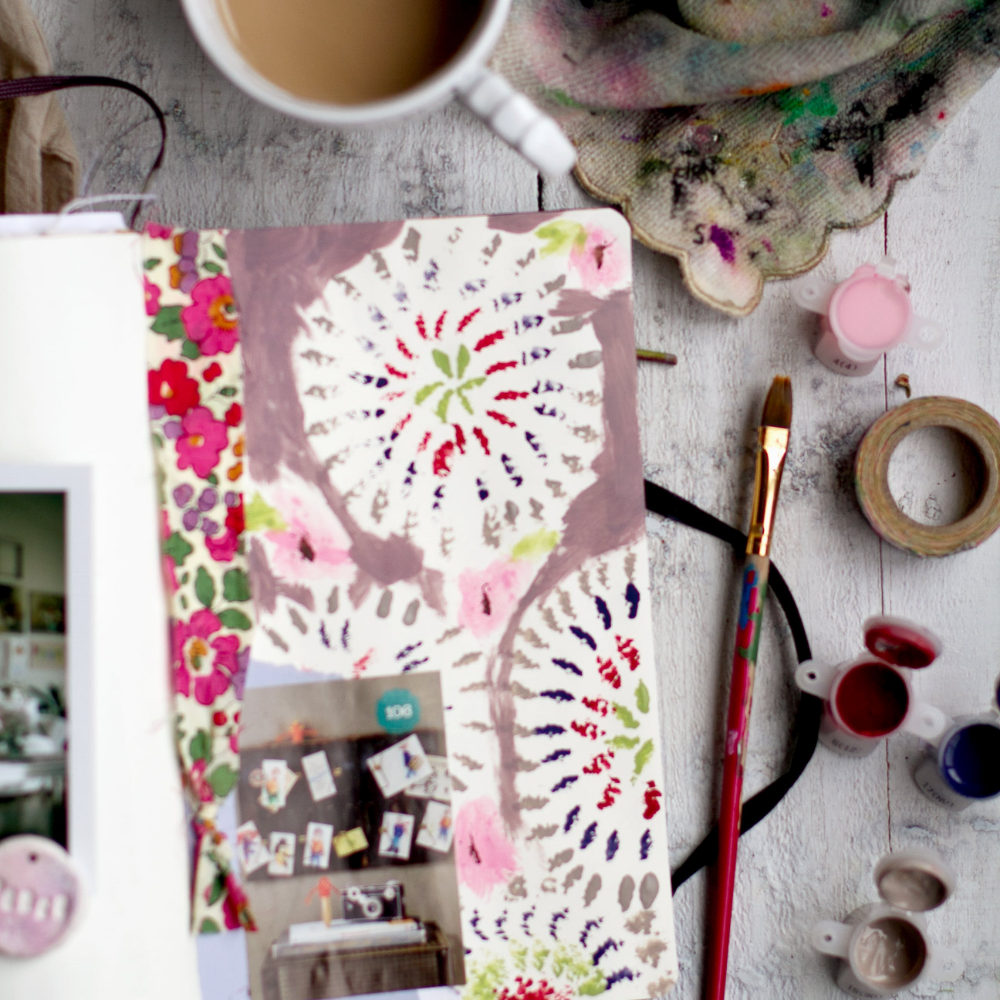
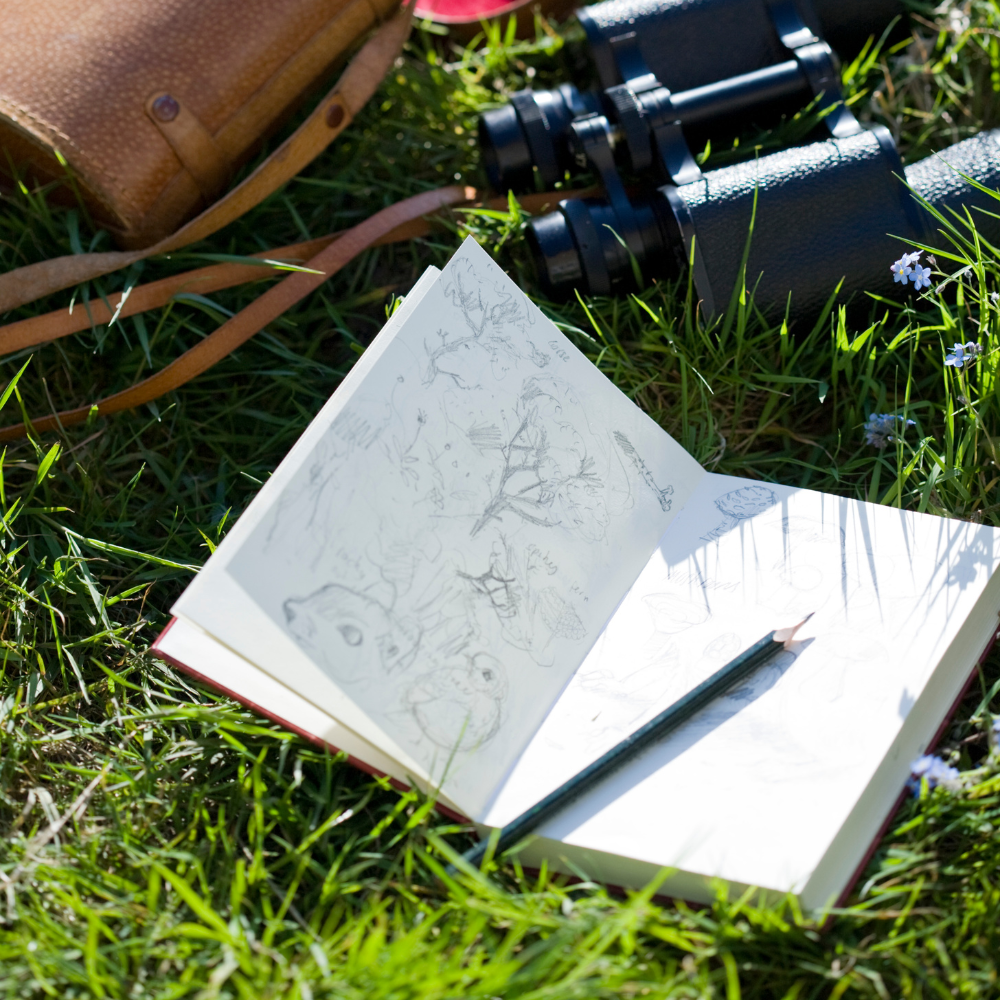
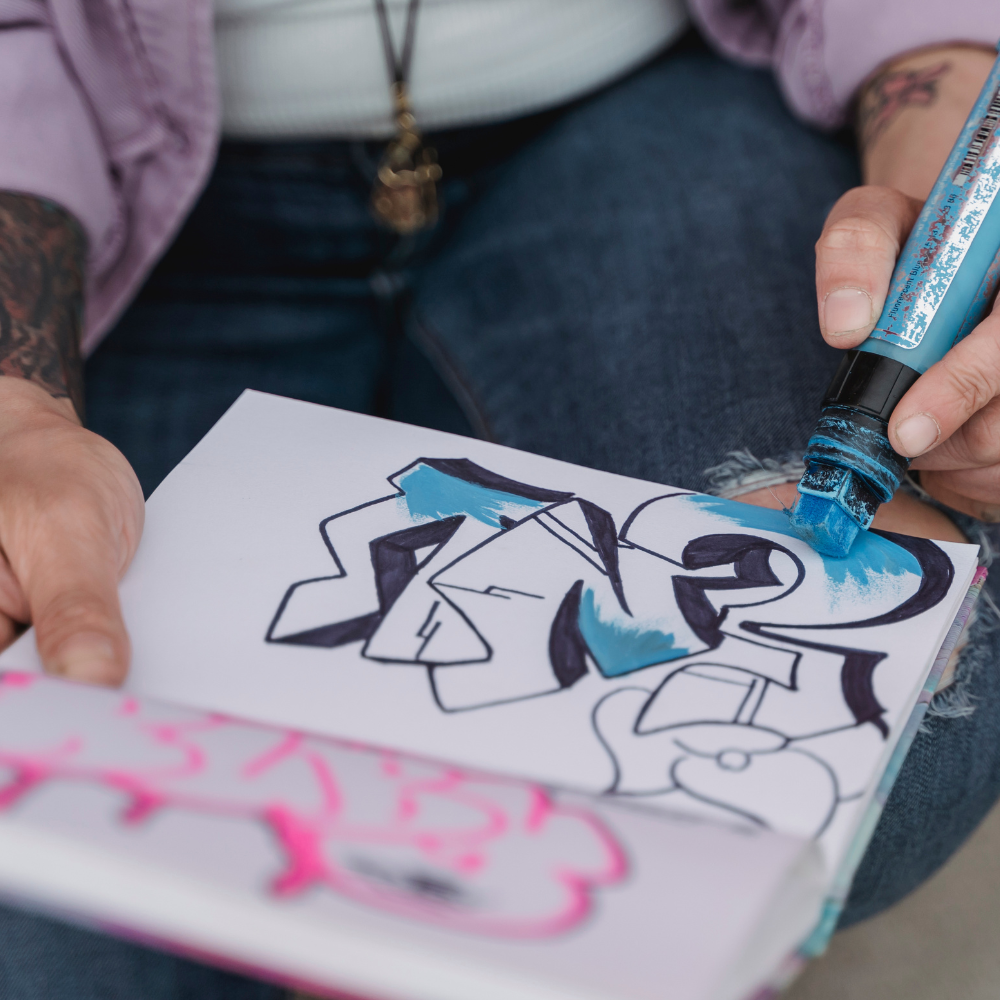
Maintaining Your Art Journal
To maintain your art journal, it's important to make it a regular part of your life.
Set aside time each week to work on your pages, and don't be afraid to revisit and add to previous entries.
Your journal is a living document that evolves with you.
Also, consider creating a workspace that inspires you and helps you focus on your art.
Another essential aspect of maintaining your art journal is taking care of your materials.
Keep them organized and stored properly to ensure their longevity.
You may also want to keep an inventory of what supplies you have on hand to avoid duplicate purchases.
Sharing Your Art Journal
While art journaling is a personal journey, sharing your work can be rewarding.
Whether you share your pages with close friends or a wider audience online, the feedback and connections you make can be incredibly enriching.
However, it's important to remember that your art journal is yours, and you have the right to keep it private if you wish.
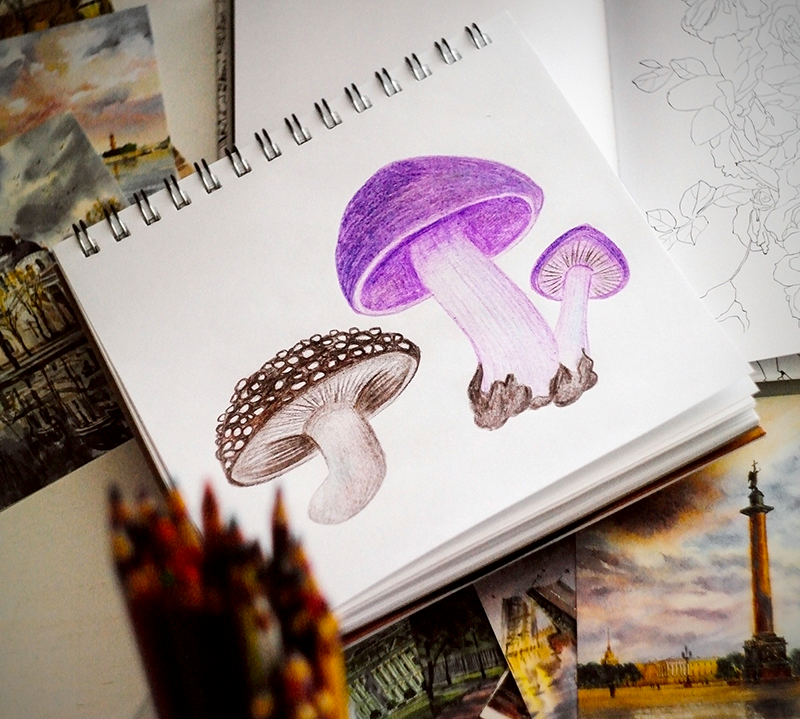
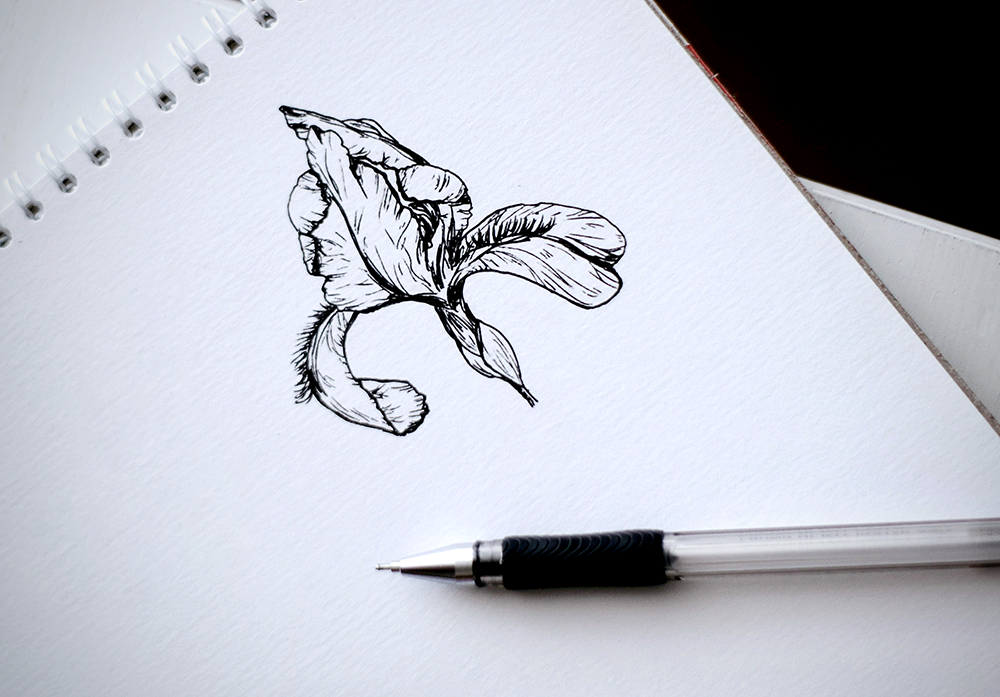

The Endless Possibilities of Art Journaling
The art journal is a deeply personal and unique form of self-expression.
Art journaling is a flexible and fulfilling practice that allows for personal growth and creative expression.
It is a fun and creative way to express yourself, explore different mediums, and reflect on personal experiences.
By understanding the foundational rules and gathering the right art supplies, you can start an art journal that reflects your unique perspective.
Make sure to embrace the creative process, find inspiration in the world around you, and never be afraid to experiment.
Remember that there are no official rules when it comes to creating an art journal, and that it's all about self-expression and exploration.
Use your supplies, try different techniques, and let your creativity run wild; whether you use your drawing skills, collage, or write on your pages, the possibilities are endless.
Your art journal is a reflection of your life, a visual diary that captures the essence of your experiences and emotions.
Embrace mistakes and imperfections and make art journaling a consistent habit in your life.
With these tips and tricks, you'll be well on your way to creating a beautiful, unique piece of art that's all your own.
So go ahead, grab your art supplies, start journaling, and let your creativity take flight in the pages of your art journal!
Don't be afraid to pick up that pencil or paintbrush and let your thoughts and feelings flow freely onto the page.
There's no right or wrong way to create an art journal, just let your imagination guide you on this exciting journey of self-discovery and creativity!
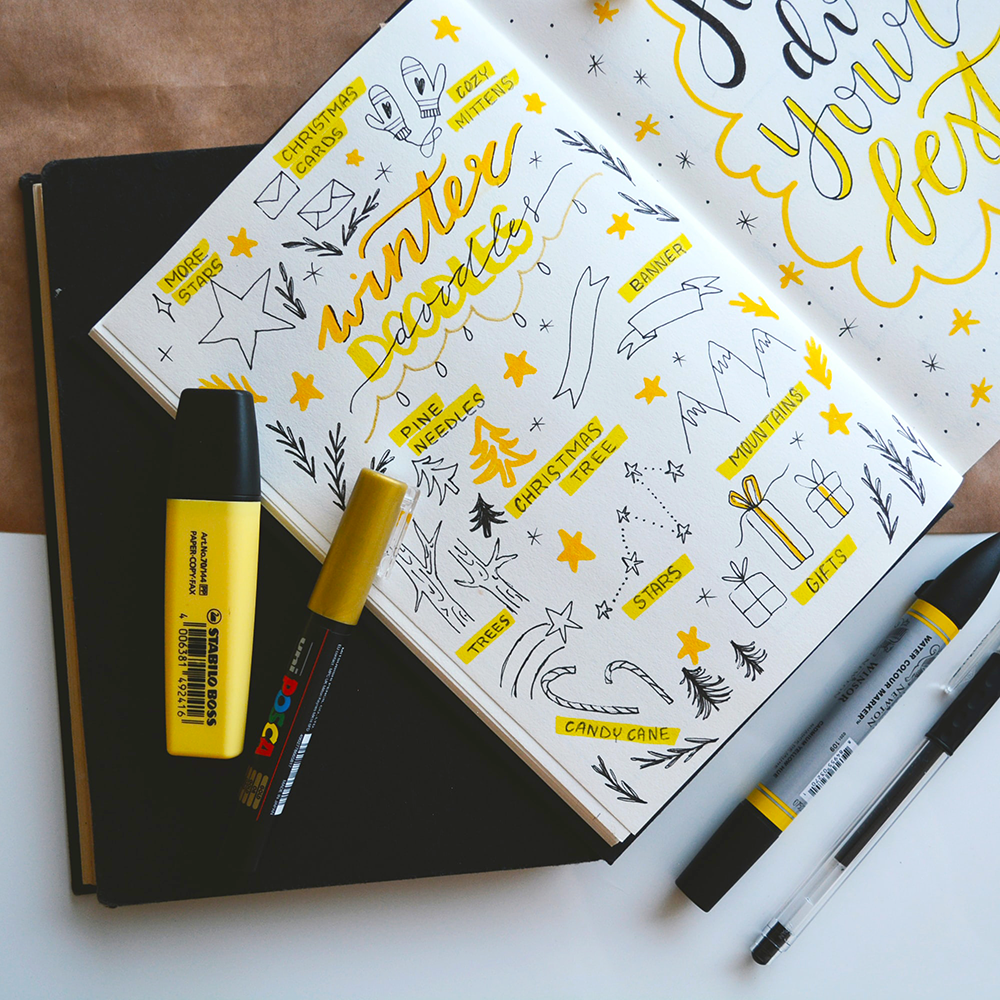
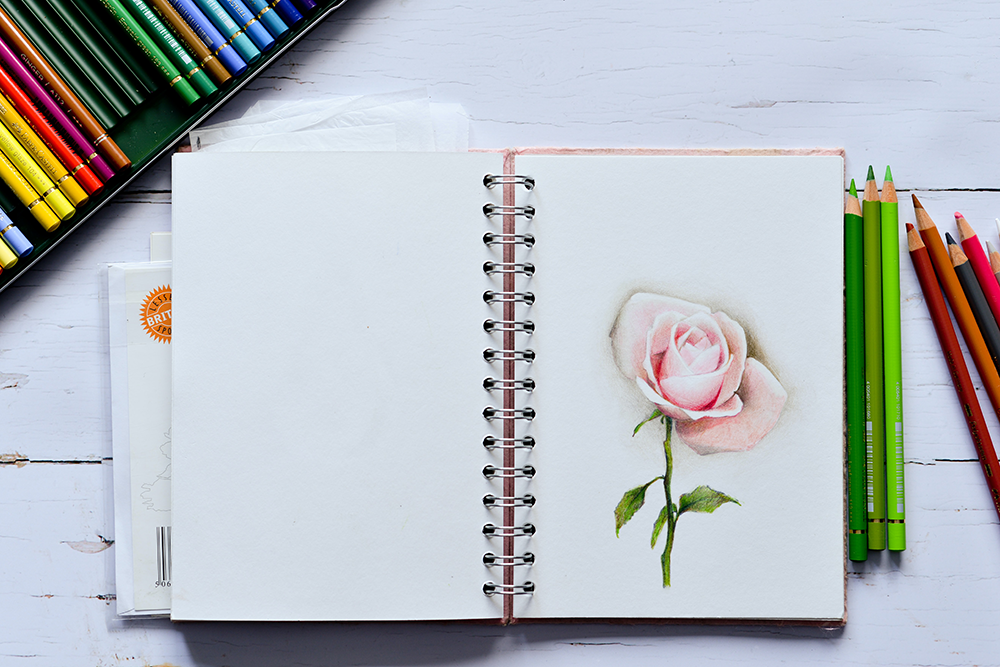

Looking to make your creative journaling easier? Check out Niamh Baly's video!
Want even more content about creativity and art?
Be sure to check out all of our creative chronicles!
Eager to learn more about journals and sketchbooks?
Check out some of our other articles:
-What is the difference between a journal and an art journal?
-What's the difference between a sketchbook and an art journal?

